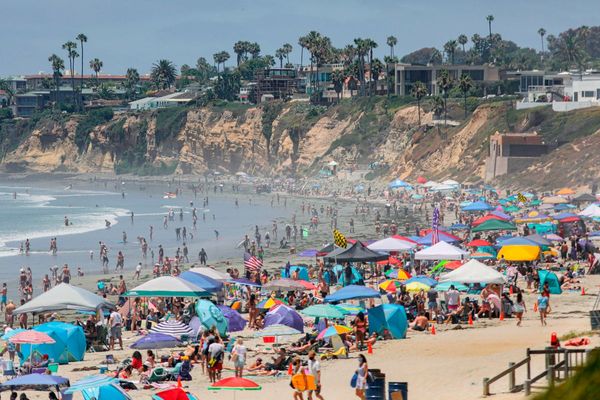
The Chicxulub Crater is one of the largest impact craters on Earth, measuring over 180 kilometers in diameter. It is believed to be the result of the asteroid impact that led to the extinction of the dinosaurs around 66 million years ago.
2. Vredefort Crater, South Africa
The Vredefort Crater is the oldest and largest known impact crater on Earth, estimated to be over 2 billion years old. It is a UNESCO World Heritage Site and provides valuable insights into the Earth's geological history.
3. Sudbury Basin, Canada
The Sudbury Basin is one of the world's largest impact structures, formed over 1.8 billion years ago by a meteorite impact. It is known for its rich mineral deposits, particularly nickel and copper, which have been mined for over a century.
4. Manicouagan Crater, Canada
The Manicouagan Crater is a prominent ring-shaped impact structure in Quebec, Canada, with a diameter of approximately 100 kilometers. It is one of the best-preserved impact craters on Earth and is now a popular tourist destination.
5. Barringer Crater, USA
Also known as Meteor Crater, the Barringer Crater in Arizona is a well-preserved impact crater formed around 50,000 years ago by the impact of a nickel-iron meteorite. It is one of the most accessible and best-studied impact craters in the world.
6. Ries Crater, Germany
The Ries Crater in Bavaria, Germany, is a well-preserved impact structure formed around 15 million years ago by a meteorite impact. It is known for its distinctive circular shape and is a popular destination for geologists and tourists.
7. Wolfe Creek Crater, Australia
The Wolfe Creek Crater in Western Australia is a relatively young impact crater, estimated to be less than 300,000 years old. It is well-preserved and provides valuable insights into the geological processes associated with meteorite impacts.
8. Pingualuit Crater, Canada
The Pingualuit Crater in Quebec, Canada, is a pristine circular impact structure formed over 1.4 million years ago. It is known for its crystal-clear lake, which is one of the purest bodies of water on Earth and attracts visitors from around the world.
9. Lonar Crater, India
The Lonar Crater in Maharashtra, India, is a unique impact crater formed in basaltic rock around 52,000 years ago. It is known for its saline lake, which is believed to have formed due to groundwater seepage into the crater.
10. Tswaing Crater, South Africa
The Tswaing Crater in South Africa is a well-preserved impact crater formed around 220,000 years ago by a meteorite impact. It is now a protected area and serves as a valuable site for scientific research and education.







